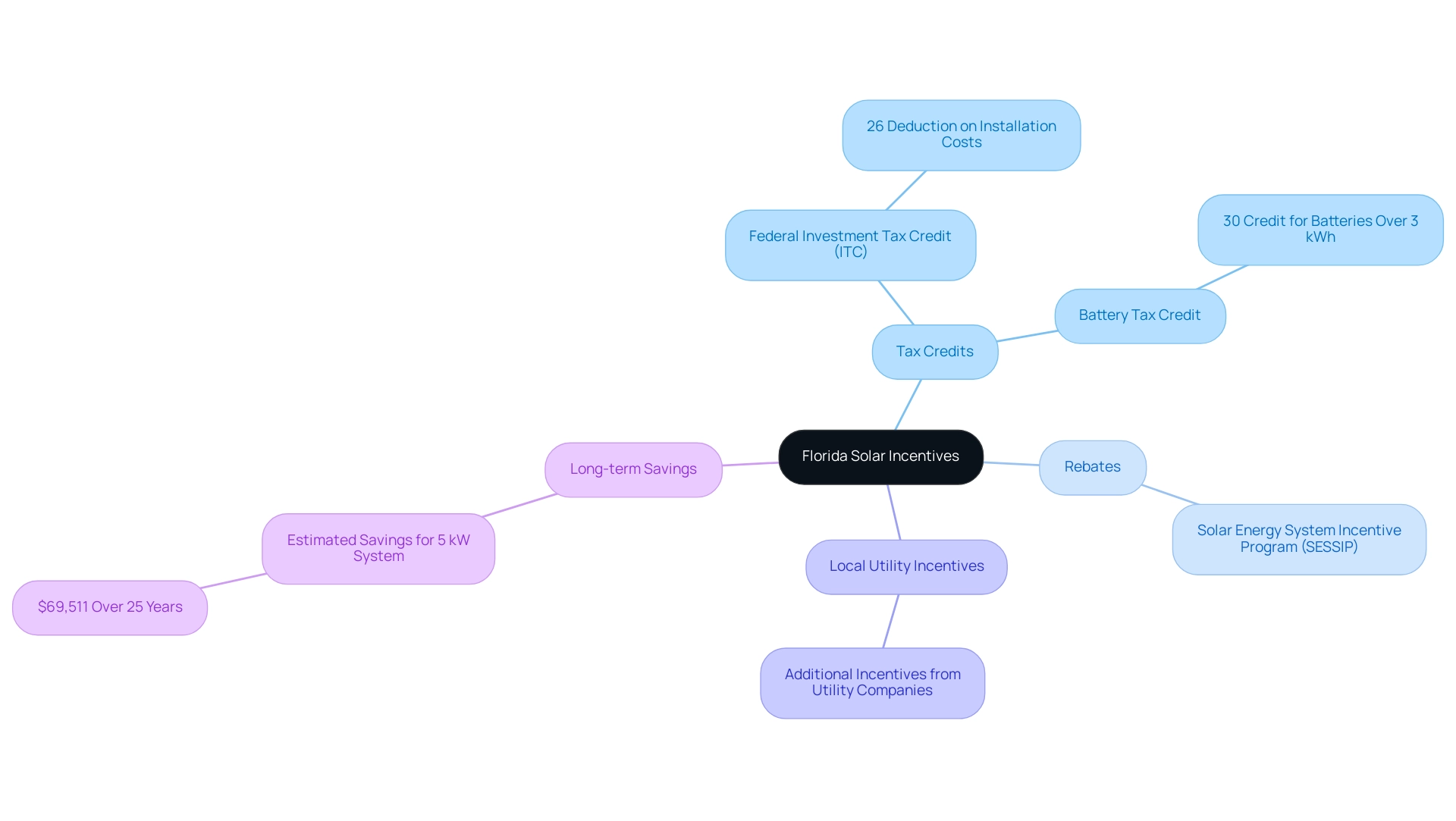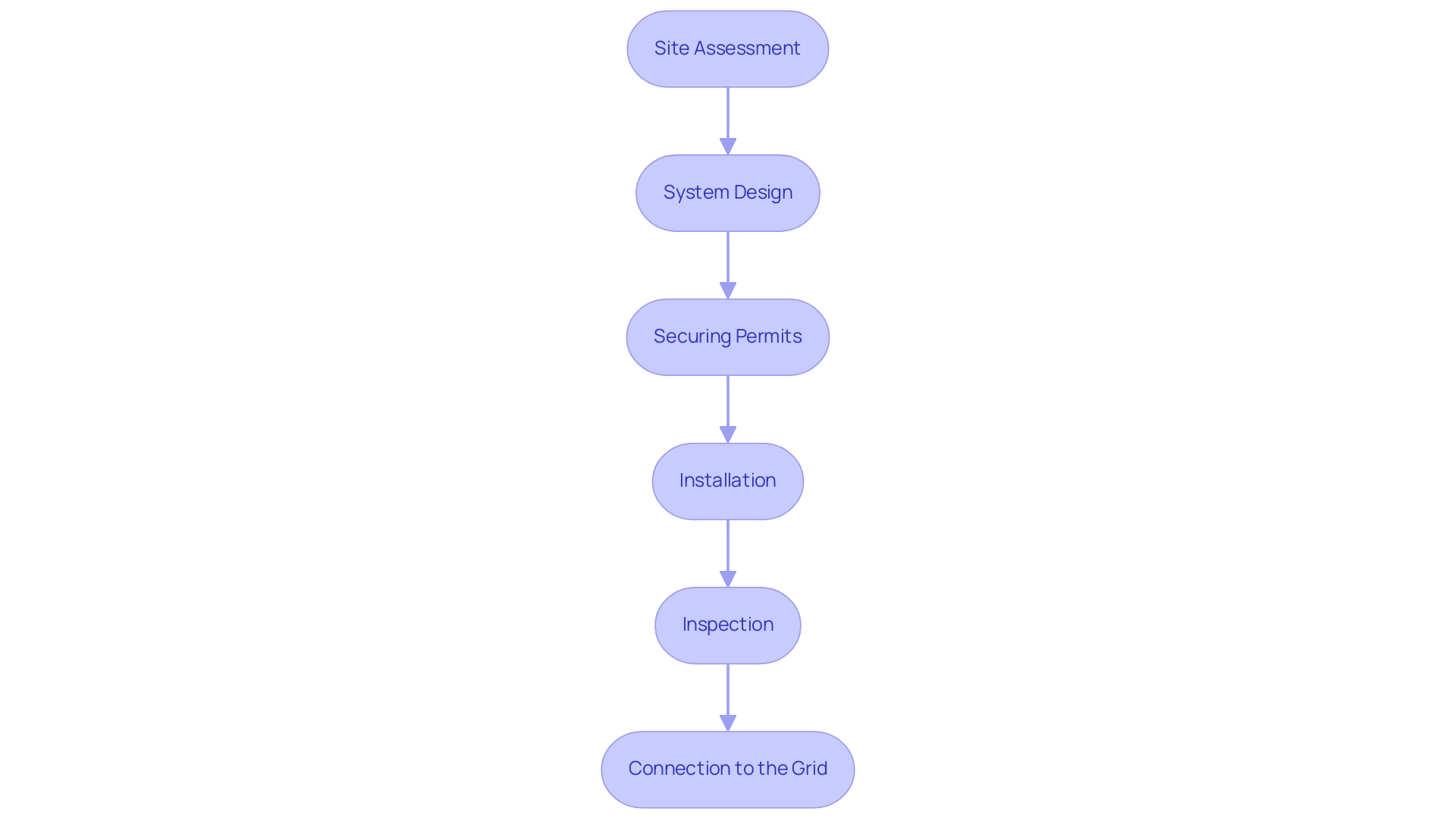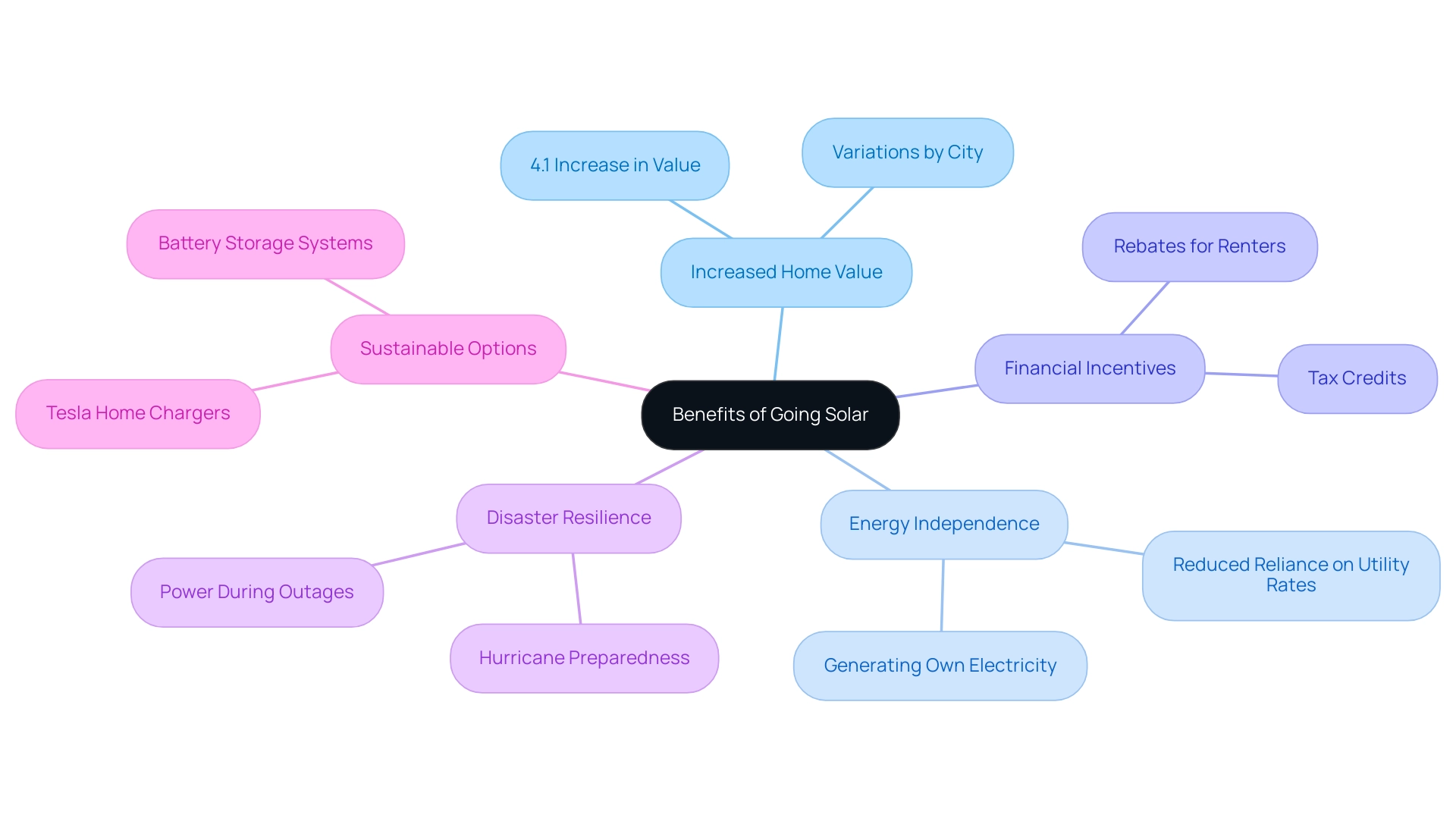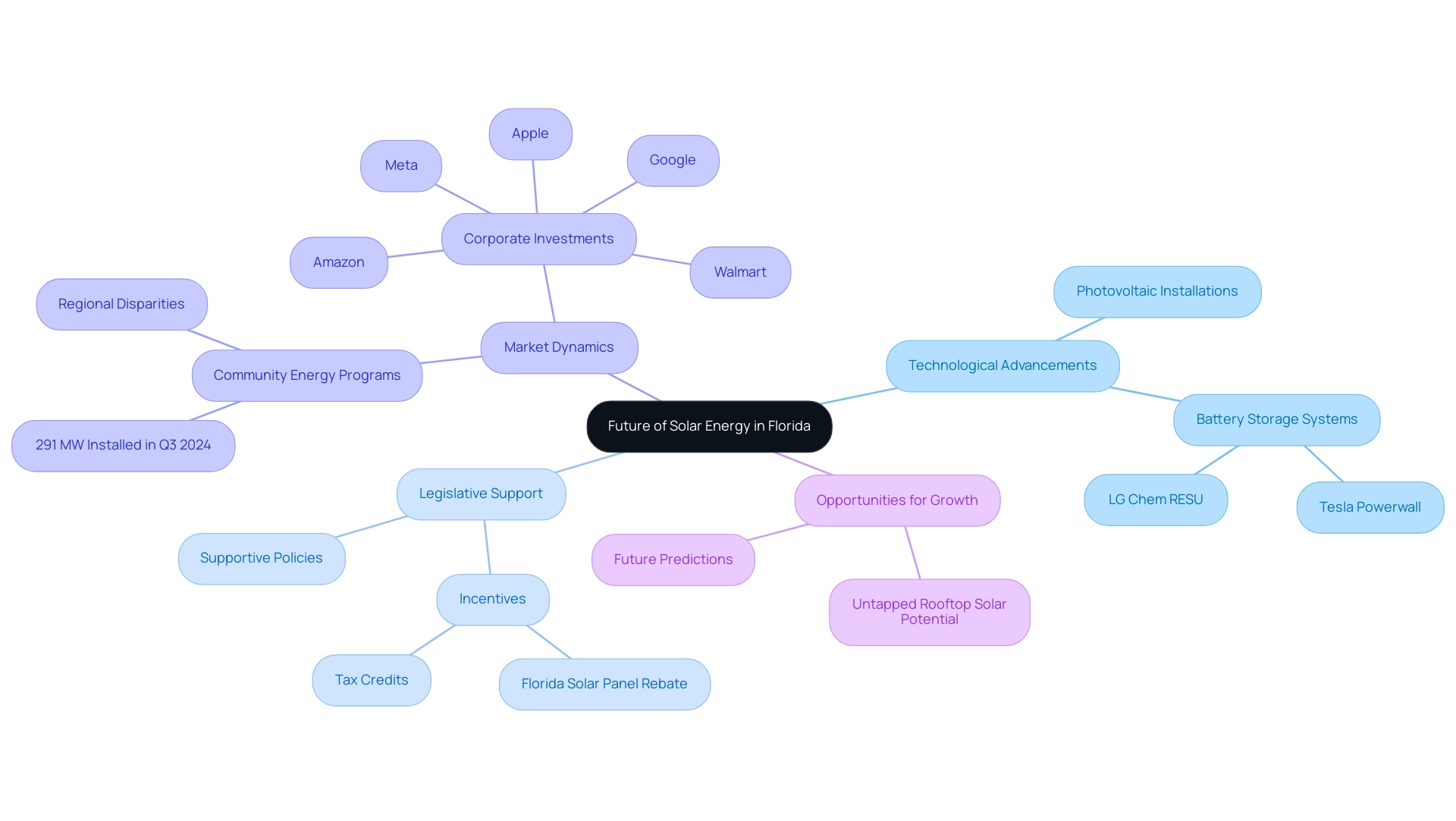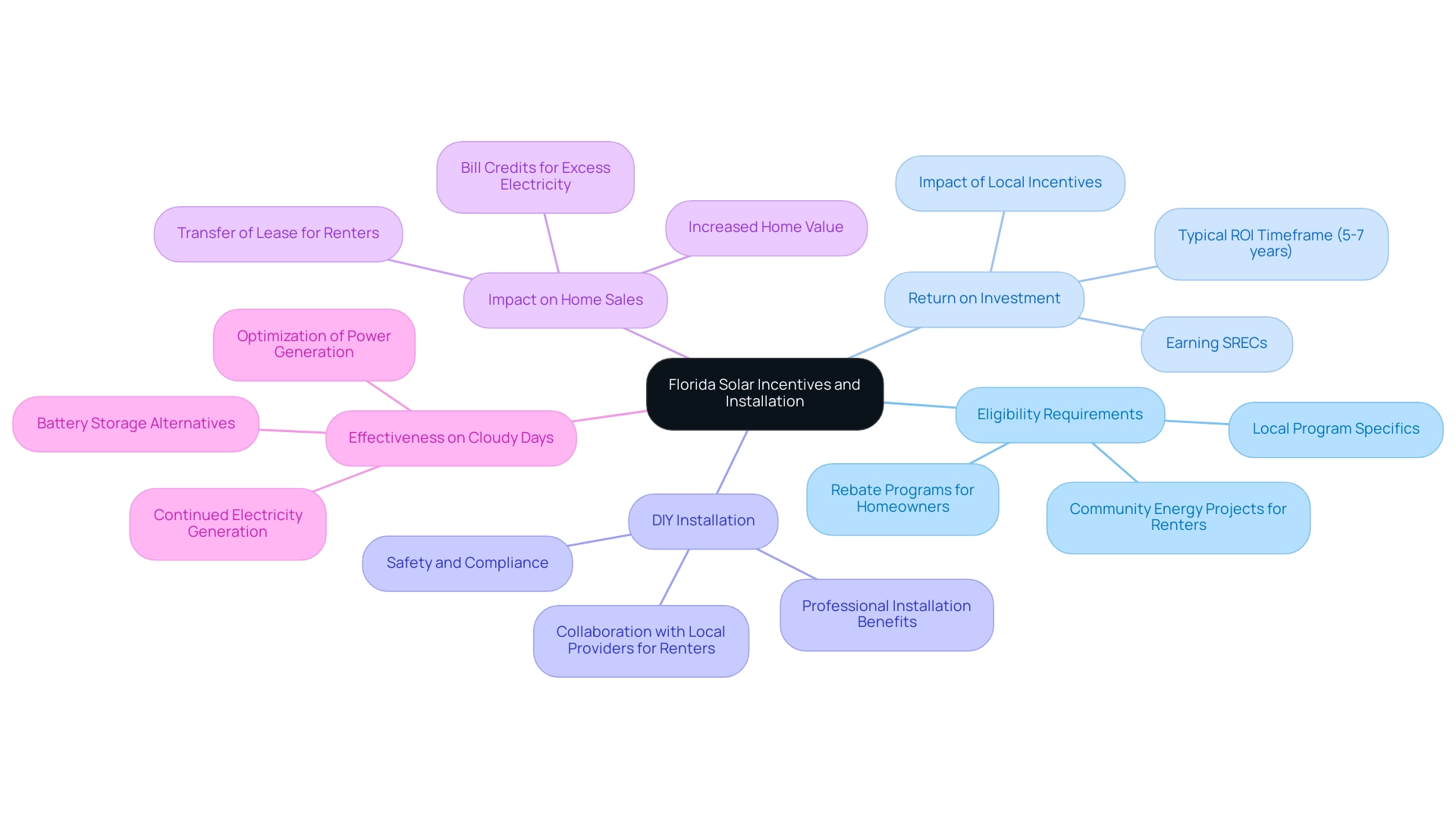Introduction
Considering a shift to solar energy in Florida? Homeowners are in for a treat as the Sunshine State offers a wealth of financial incentives that can make going solar not only eco-friendly but also financially savvy.
With the Federal Investment Tax Credit allowing a significant deduction on installation costs and various state programs providing rebates, the path to solar energy is paved with opportunities for savings.
This article delves into the myriad of options available, from understanding the costs and installation processes to exploring the long-term benefits of solar energy.
Whether it’s boosting home value or achieving energy independence, the advantages are compelling.
Read on to discover how Floridians can harness the sun’s power and take advantage of the incentives that make this transition both practical and rewarding.
Exploring Florida’s Solar Incentives: Rebates and Tax Credits
If you’re a homeowner in Florida thinking about switching to renewable power, you’re in luck! Florida offers a variety of financial incentives, such as the florida solar panel rebate, that make this eco-friendly choice even more enticing. One of the most significant options is the Federal Investment Tax Credit (ITC), which allows you to deduct 26% of your installation costs from your federal taxes.
Furthermore, batteries exceeding 3 kWh qualify for a 30% federal tax credit, making it a perfect moment to evaluate storage solutions alongside your photovoltaic panels. On top of that, Florida’s Solar Energy System Incentive Program (SESSIP) provides a florida solar panel rebate that varies based on the size of your installed energy system. Be sure to check with your local utility company, as they may offer additional incentives that could further reduce your costs.
It’s important to mention that Florida lacks a renewable portfolio standard or a net metering policy, which indicates that although there are incentives, the landscape for renewable sources may vary from other states. Moreover, examining alternatives such as Tesla home chargers can improve your renewable power experience, offering effective charging solutions for your electric vehicle. These financial breaks can dramatically reduce the overall cost of switching to renewable power, helping you save money while contributing to a cleaner future.
In fact, homeowners who invest in a 5 kW energy system can expect to save around $69,511 over 25 years when paying cash—a fantastic return on investment! As advocate Mia McCormick from Environment Florida states,
Establishing a sustainable and cleaner future for the next generation of Floridians should be our main focus.
By utilizing these incentives and considering comprehensive energy solutions, you’re not just saving money; you’re also making a positive impact on your community and the environment, showcasing the long-term sustainability and economic benefits of energy solutions.
Understanding the Costs and Installation Process for Solar Panels in Florida
When contemplating solar panel setup in Florida, homeowners can anticipate expenses to vary between $15,000 and $25,000 for a residential arrangement before any incentives. This variation typically depends on the size of the system and the quality of the components. The setup procedure is generally straightforward and unfolds in several key steps:
- A site assessment identifies the optimal arrangement for your home.
- System design.
- Securing permits.
- The setup itself.
- An inspection to ensure compliance with local codes.
On average, the installation takes about 1 to 3 days, but it can take a few additional weeks for inspections and connection to the grid.
To make this investment more manageable, homeowners have various financing options, including:
- Energy loans
- Leases
- Power purchase agreements (PPAs)
Each option presents unique benefits, so it’s essential to evaluate which aligns best with your financial situation. As one expert pointed out, “Home photovoltaic systems are viewed as a secure and stable investment with a return rate akin to real estate and 401k, making it a prudent safeguard against increasing utility expenses.”
With the average grid electricity cost having surged 18% in just the last two years, investing in photovoltaic systems not only offers significant savings but also provides financial security against ongoing power inflation.
Property owners can also benefit from the Florida solar panel rebate and other government programs for photovoltaic panels, which provide various tax incentives and rebates to lower the total expense of setup. For example, the federal tax incentive for photovoltaic systems enables property owners to subtract a portion of their installation expenses from their federal taxes, enhancing the availability of renewable power. Additionally, many states have their own incentives, which can further enhance savings.
California serves as an exemplary model for energy savings, demonstrating how high utility rates and abundant sunshine can lead to substantial financial benefits. With recent changes to export values, California continues to be a leader in renewable power adoption, demonstrating the potential for similar benefits for Florida residents. Furthermore, case studies like the ‘Financial Value of Photovoltaic Systems’ demonstrate how residential photovoltaic installations are regarded as reliable investments against power inflation, enabling property owners to secure reduced utility expenses throughout the system’s duration.
Particular instances from Florida demonstrate how homeowners have gained from the Florida solar panel rebate programs, resulting in savings that can significantly reduce setup expenses.
The Benefits of Going Solar: Value and Energy Independence
Transitioning to renewable energy not only reduces your monthly utility expenses but also improves your home’s market value. Research indicates that homes fitted with renewable energy systems can sell for an impressive average of 4.1% more than their non-renewable counterparts, with variations depending on the city. This boost in value is just one of the many benefits of adopting renewable energy.
As one satisfied customer shared, ‘Thanks Joe, I appreciate all your efforts for making this happen and turned to be successful,’ highlighting the positive impact of solar power adoption. Homeowners also gain substantial autonomy, generating their own electricity and reducing reliance on fluctuating utility rates. This newfound independence is especially advantageous during resource crises or price surges, ensuring a stable supply for your family.
In regions encountering natural disasters, like hurricanes in Florida, renewable energy combined with battery storage can keep your home powered during outages, providing peace of mind. Notably, local companies like Powercore Electric are committed to delivering unmatched quality craftsmanship and sustainable solutions tailored to California communities. They provide customized renewable solutions that address local power needs and highlight a customer-first approach.
Furthermore, various tax credits and rebates are available for Long Beach renters seeking to transition to renewable resources, further enhancing the financial advantages. With a well-constructed photovoltaic system, many homeowners aim for net-zero power usage, resulting in significant savings while adopting a more sustainable lifestyle. Sustainable options like Tesla home chargers and battery storage systems are also available, making it easier than ever to transition to eco-friendly power.
The Future of Solar Energy in Florida: Trends and Predictions
The future of sunlight power in Florida appears more promising than ever, due to continuous developments in technology that improve efficiency and reduce expenses. In 2023 alone, an impressive 3 GW of new storage systems were deployed alongside photovoltaic installations, more than doubling the previous year’s capacity. This increase in battery storage systems enables residents to capture and store surplus power, giving them the capacity to utilize it during peak times or outages, ultimately enhancing their power independence.
Significantly, several of the top battery options available today consist of the Tesla Powerwall and LG Chem RESU, which are engineered for peak performance and dependability.
As we move forward, legislative trends are becoming more supportive of renewable initiatives at both the state and national levels, which is promising for the introduction of more appealing incentives for the adoption of these technologies, such as the Florida solar panel rebate and other tax credits targeted at environmentally aware residents. If Floridians emphasize sustainable power in upcoming elections, the state could lead the nation in sunlight generation. Moreover, the expansion of community energy programs is opening doors for many homeowners who may not be able to install panels directly on their roofs, allowing them to benefit from renewable energy without the need for physical installations.
In fact, data from the Rooftop Energy on the Rise report indicates that Florida has only tapped into about 2% of its rooftop energy potential, showcasing the immense opportunities for clean energy generation that lie ahead. The mixed performance of community energy installations, such as the 291 MW added in Q3 2024—despite a quarter-over-quarter decline—illustrates regional disparities in growth, yet it also highlights notable gains in states like Maine and Illinois. This highlights the differing speed of community energy adoption across the country.
With major U.S. corporations like Meta, Amazon, Google, Apple, and Walmart investing in photovoltaic systems and storage at unprecedented levels, as noted in SEIA’s annual Solar Means Business report, the momentum for renewable power continues to build.
Additionally, homeowners should consider eco-friendly panel cleaning options, such as biodegradable cleaners and waterless cleaning systems, to maintain their panels efficiently and sustainably. In summary, these trends and developments signal a bright future for renewable energy in Florida, where advancements in technology and supportive policies, such as the Florida solar panel rebate, are paving the way for greater adoption and accessibility, including eco-friendly battery options for efficient energy storage and maintenance, along with government programs that provide financial support for panel installations.
Frequently Asked Questions About Florida Solar Incentives and Installation
- What are the eligibility requirements for renewable energy rebates? In California, especially in Long Beach, numerous rebate programs focus on residential property owners, including renters who may gain from community energy projects or other local initiatives. It’s a great idea to check with local programs for specific eligibility criteria. For instance, a typical photovoltaic system installation costs about $17,700, and with the 30% federal tax credit, costs can drop to around $12,390, making renewable energy more accessible for everyone. Local programs may also provide extra rebates specifically for renters participating in community energy initiatives.
How long does it take to see a return on investment? Homeowners generally can expect a return on investment for their energy panels within 5 to 7 years. This timeframe can vary based on power consumption and available local incentives. Furthermore, in California, homeowners may earn Renewable Energy Credits (SRECs) for each megawatt-hour generated, offering a financial motivation to harness power from the sun. Renters can also benefit from reduced energy costs through community initiatives, which allow them to share in the savings.
Can I install photovoltaic panels myself? While it is possible to undertake a DIY solar panel setup, hiring professionals is highly recommended. Professional setup ensures safety and compliance with local regulations and helps you qualify for various incentives. Many programs require that a certified installer performs the installation to be eligible for rebates. For renters, collaborating with local energy providers can help navigate these requirements effectively.
What if I sell my home? Installing photovoltaic panels can be a great investment, often increasing your home’s value. Many buyers specifically seek homes with existing energy systems. If you’re renting your photovoltaic panels, you might have the option to transfer that lease to the new property owner. Additionally, homeowners can receive bill credits for excess electricity generated, enhancing your home’s attractiveness on the market. Renters involved in community energy projects can also transfer their benefits to new residents.
Are photovoltaic panels effective during cloudy days? Yes! Solar panels continue to generate electricity even on cloudy days, although their efficiency may decrease slightly. Fortunately, many contemporary photovoltaic systems are engineered to optimize power generation, guaranteeing you can obtain the maximum from your setup, regardless of the weather. For Long Beach tenants, investigating alternatives such as battery storage can further improve power reliability and efficiency. Additionally, integrating Tesla home chargers can optimize energy use by allowing homeowners to charge electric vehicles using solar power, further promoting eco-friendly practices.
Conclusion
Transitioning to solar energy in Florida is not just a smart financial decision; it’s a powerful step towards a sustainable future. With a variety of incentives, such as the Federal Investment Tax Credit and state-specific rebates, homeowners can significantly reduce the costs associated with solar installation. Understanding the installation process and available financing options further empowers homeowners to make informed decisions that align with their financial goals.
The benefits of solar energy extend beyond mere savings. By investing in solar panels, homeowners can:
- Increase their property value
- Gain energy independence, protecting themselves from rising utility costs
Moreover, as advances in technology continue to improve efficiency and storage options, the potential for solar energy in Florida is greater than ever. The state is on the brink of unlocking its vast solar potential, with community programs and supportive legislation paving the way for broader adoption.
Ultimately, harnessing the power of the sun not only benefits individual households but also contributes to a cleaner, more resilient energy landscape for all Floridians. By taking advantage of the current incentives and embracing solar solutions, homeowners can play a vital role in fostering a sustainable future while enjoying the financial perks that come with it. The time to act is now—embracing solar energy is a decision that pays off for both the wallet and the planet.



